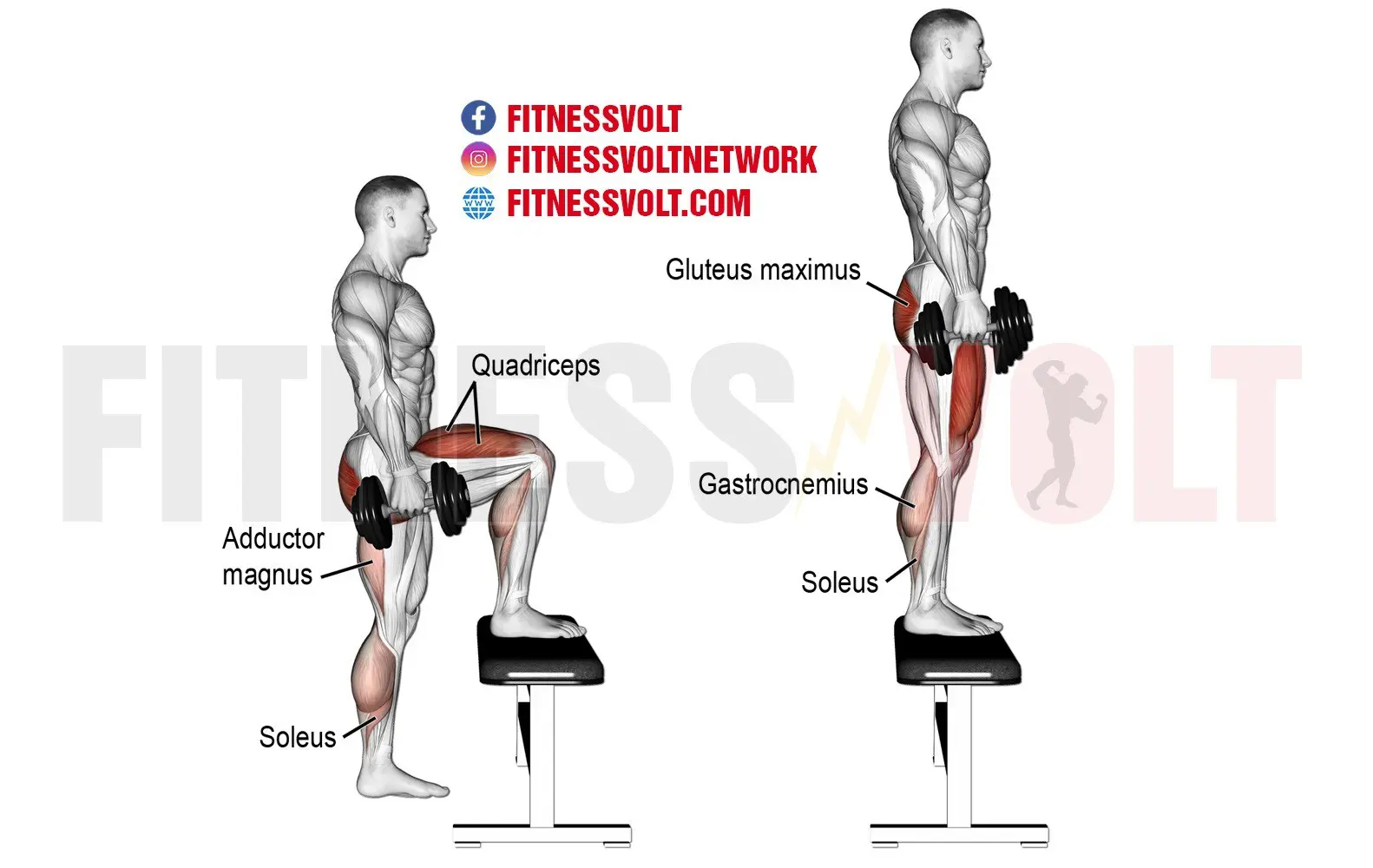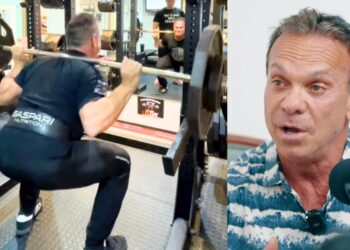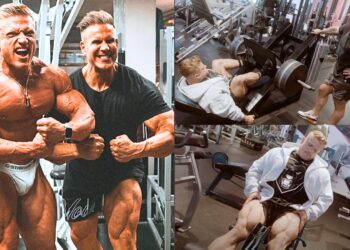For those looking to develop lower body strength, there are a number of exercises that are considered essentials. A combination of squats, deadlifts, leg presses and lunges generally form the foundation for all lower body strength training.
In terms of the demand placed on the body and the potential benefits associated with regularly performing them, many argue that no other exercises compare.
However, this article will cover one of the best, and often neglected, strength building exercises for the legs – the step-up.
The step-up is a compound exercise meaning that multiple muscle groups are worked across a number of joints. More specifically, the step-up predominantly places a demand on the glutes and quadriceps (1), which control hip and knee extension, while also loading the hamstrings and calves as they stabilize the knee and ankle respectively. All multi-joint exercises, such as the step-up, have been found to greatly impact strength as well as develop proprioceptive capabilities – such as balance and coordination. (2)
On that note, the step-up is specifically useful for developing core strength and stability. Although we start and end the step-up with both feet in contact with the floor or box, the step-up is a unilateral or single limb exercise as only one leg drives the body up.
As a result of the instability associated with unilateral movements, the core must engage to a greater extent in order to stabilize the body throughout the movement. Over time, this core engagement will have a positive impact on one’s overall core strength and stability. (3)
Level Up Your Fitness: Join our 💪 strong community in Fitness Volt Newsletter. Get daily inspiration, expert-backed workouts, nutrition tips, the latest in strength sports, and the support you need to reach your goals. Subscribe for free!
In order to add resistance to the step-up and continue to build pure leg and core strength, there is a multitude of different gym equipment that can be used – barbells, dumbbells, kettlebells, resistance bands, and cables – to name a few.
The benefit of using a variety of equipment for the step-up is that we can move the load to other locations on the body thus providing subtle changes to the exercise. For example, the dumbbell step-up holds the weight by the side of the body whereas the barbell step-up places a load on the upper back.
Performing The Perfect Step-Up
1) – Setting Up The Step-Up
In order to complete the step-up, you will require a bench or box that is approximately knee height. The minimum requirement for the step-up is to ensure that the femur (upper leg) is parallel with the floor or lower.
It is vital to set up with a good amount of distance between you and the box and ensure that you place the feet slightly wider than the hip width. Once set up, bring one leg up and place the foot flat on the box keeping the toes pointing forward.
2) – Executing The Step-Up
Before completing a step-up, it’s important to lean forward slightly in order to shift body weight over the leading leg. Once in position, drive hard through the heel and avoid generating any force from the floor. All the power you generate should come from the front leg – not the back leg.
Brace the core hard as you step-up which will keep you more stable and facilitate efficient movement. Failure to engage the core (especially under resistance), can lead to excessive leaning, rounding, and injury. (4) Therefore, push the chest high and squeeze all the muscles of the trunk.

3) – Adding Resistance
To familiarize yourself with the requirements of the exercise, you may want to wish to start with bodyweight step-ups. From there, you can progress onto a resisted step-up which will add complexity, demand, and difficulty to the step-up. The most simple and practical way of adding resistance to the step-up is the use of dumbbells or kettlebells. For the dumbbell/kettlebell step-up, keep the arms extended throughout and pin the weight tight to the hips throughout. Alternatively, place the dumbbell in goblet position which simply involves pinning the weight tight to your chest.
4) – Step-Up Variations
There are other step-up variations that can be performed to increase demands and apply stress to the muscles in a different way. One simple variation involves moving diagonally as you step-up which will activate the hip adductors a lot more. A second variation would the lateral step-up which requires the individual to step-up laterally, or sideways. A final variation is the step-down which requires an advanced degree of core control and leg strength.
5) – Programming a Leg Strength Session
As emphasized earlier, it’s vital to include the foundational lifts of squats and deadlifts when designing a leg strength session. Beyond that, it really comes down to personal preference for selecting accessory exercises but we must remember the importance of working all muscle groups of leg equally.
Here is what a standard leg strength session, incorporating step-ups, may look like. As you can see, the “non-negotiable” exercises of deadlift and squat are incorporated along with two accessory exercises that target opposing muscle groups. The dumbbell step-up focuses on glute/quad development whereas the dumbbell straight leg deadlift switches the focus to glute/hamstring development.
| Exercise | Sets x Reps |
| Barbell Deadlift | 4 x 6 |
| Barbell Back Squat | 4 x 6 |
| Dumbbell Step-Ups | 4 x 12 |
| Dumbbell Straight Leg Deadlift | 4 x 12 |
Final Word
Although exercises such as the squat and the deadlift must be seen as crucial for progressing strength capability, it is certainly worth considering step-ups as an accessory exercise in an attempt to drive strength levels up. This is especially true for any individual who may be looking to advance their proprioceptive skill along with their leg strength.
References:
1. Simenz, Christopher J.; Garceau, Luke R.; Lutsch, Brittney N.; Suchomel, Timothy J.; Ebben, William P. (2012-12). “Electromyographical analysis of lower extremity muscle activation during variations of the loaded step-up exercise”. Journal of Strength and Conditioning Research. 26 (12): 3398–3405. doi:10.1519/JSC.0b013e3182472fad. ISSN 1533-4287. PMID 22237139.
2. Publishing, Harvard Health. “Balance & Mobility”. Harvard Health. Retrieved 2019-04-10.
3. CORE STABILITY TRAINING, Journal of Strength and Conditioning Research, 2007, 21(3), 979–985
4. Huxel Bliven, Kellie C.; Anderson, Barton E. (2013-11-01). “Core Stability Training for Injury Prevention”. Sports Health. 5 (6): 514–522. doi:10.1177/1941738113481200. ISSN 1941-7381. PMC 3806175. PMID 24427426.









Great write up, simple, to the point, everything I was looking for. After getting sloppy with my workouts and form, and creating a recipe for back injury, I’m slowly building myself back up from body weight to correct my form and adding weight little by little to strengthen my lower body. The step up has been instrumental in this process. I didn’t think about the diagonal and side step as an variation, I”ll try those out with body weight. Thanks again, this helped a lot.